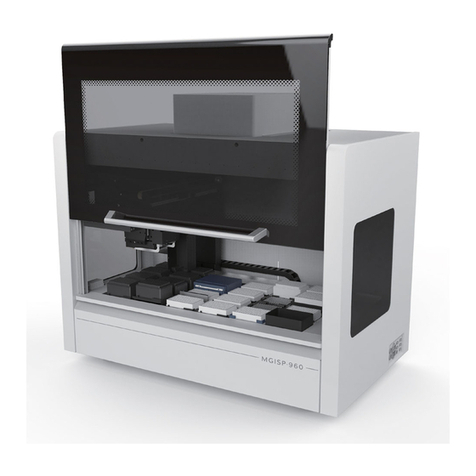
About this manual
This manual is applicable to Genetic Sequencer (DNBSEQ-G800RS). The manual
version is 1.0 and the software version is V1.
This manual and the information contained herein are proprietary to Complete
Genomics, Inc. (hereinafter referred to as CG), and are intended solely for the
contractual use of its customers in the use of the products described herein
and for no other purpose. This manual and its content shall not be reprinted,
reproduced, modified, distributed, or disclosed to others, in whole or in part,
without prior written consent from CG.
CG makes no commitment to this manual, including (but not limited to) any
special purpose commercial and any reasonable implied warranties. CG has
taken measures to ensure the correctness of this manual. However, CG is not
responsible for any missing parts of the manual, and reserves the right to revise
the manual and modify the device, so as to improve the reliability, performance
or design.
Figures in this manual are for illustrative purpose only. The content might be
slightly dierent from the device. For the most up to date details, refer to the
device purchased.
DNBSEQTM is a trademark of CG or its affiliates in U.S. and/or other
countries. Intel® and Xeon® are trademarks of Intel Corporation or its
subsidiaries in the U.S. and/or other countries. QubitTM is the trademark of
Thermo Fisher Scientific, or its subsidiaries. ProClinTM is a trademark of the
Dow Chemical Company (Dow) or an aliated company of Dow. Other names
and trademarks mentioned in this manual are the property of their respective
companies and subsidiaries.
©2023 Complete Genomics, Inc. All rights reserved.




























